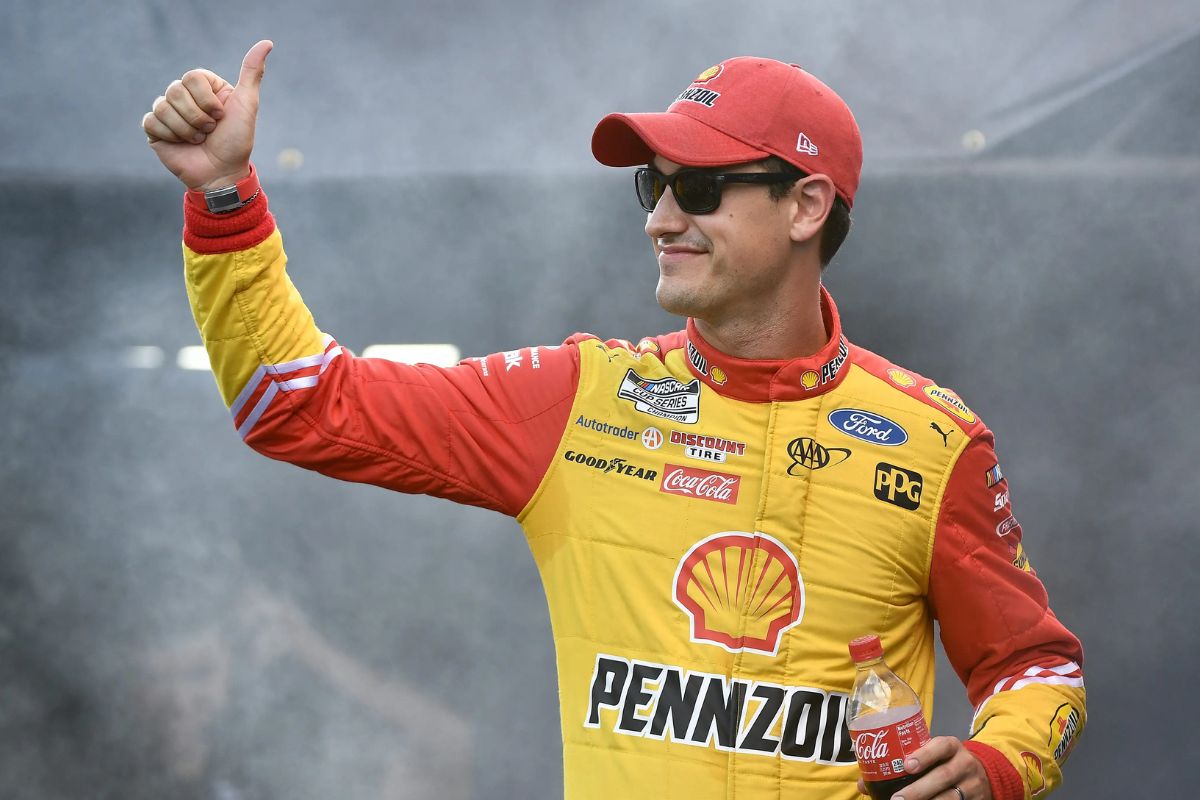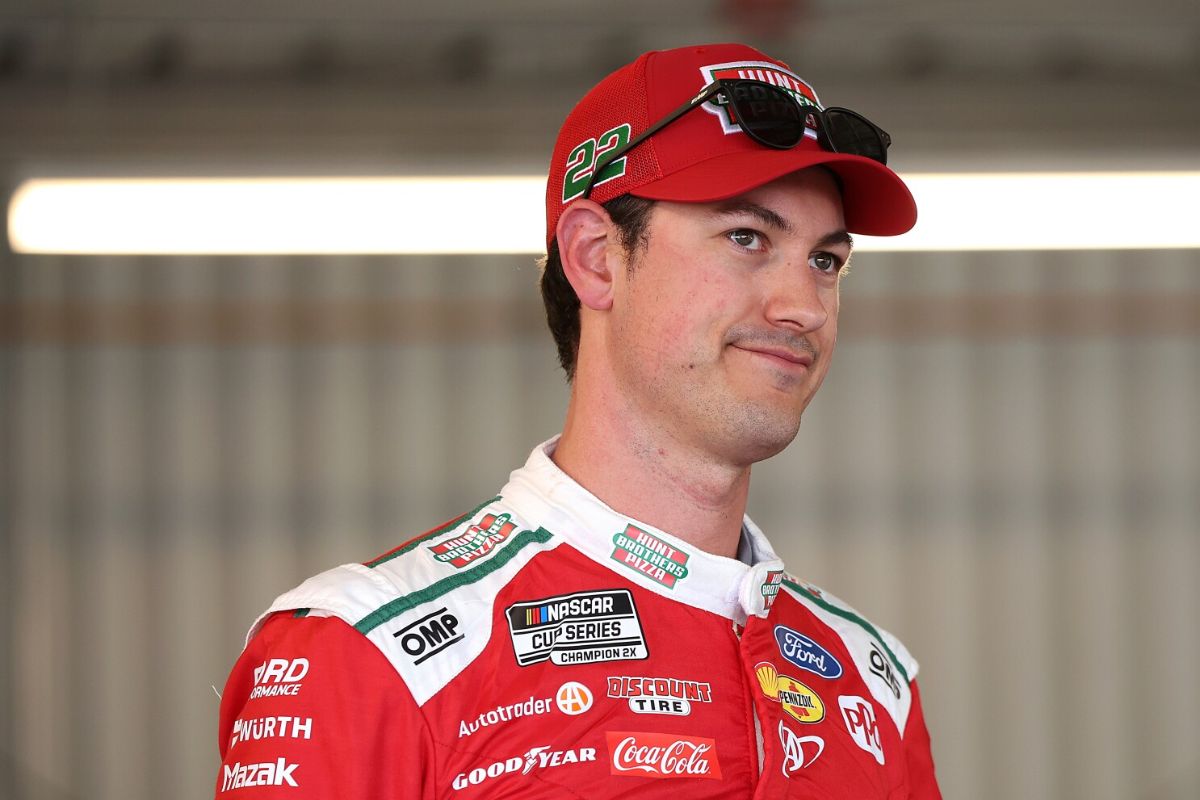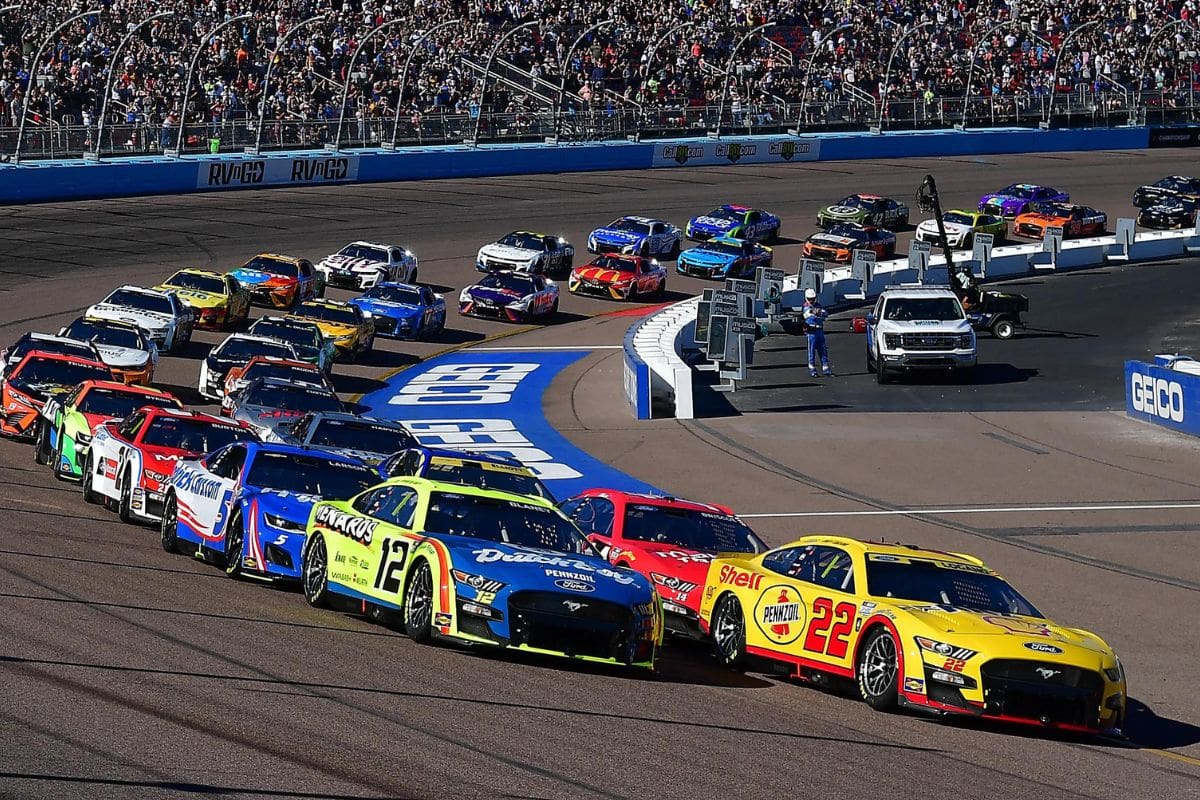Joey Logano on Richmond’s Option Tire Challenge: Joey Logano‘s recent commentary on Richmond‘s ‘Option’ tire challenge highlights a crucial moment in NASCAR strategy, where the interplay between performance and tire management becomes critical. His ‘wait and see’ approach reflects a detailed understanding of the softer tires‘ potential for improved grip, juxtaposed with the risk of accelerated wear. As teams prepare to navigate the complexities of tire performance, Logano’s insights prompt further exploration into how such strategies may impact race outcomes. What are the implications of these choices for both drivers and teams as the season progresses?
Key Highlights
- Joey Logano emphasizes the need for a tactical approach due to the unpredictability of the softer ‘Option’ tires.
- He acknowledges that softer tires improve grip but degrade more quickly, complicating strategy at Richmond.
- Logano’s past experiences inform his expectations, highlighting the importance of adapting to tire performance during the race.
- Collaboration with crew chief Wolfe focuses on combining data analysis with real-time driving decisions for tire management.
Upcoming Race and Tire Strategy
As the NASCAR Cup Series resumes with the Cook Out 400 at Richmond, teams face a vital decision regarding tire strategy, balancing the allure of speed from softer options against the durability of harder compounds on the challenging track surface. This race presents a crucial moment, as the unique characteristics of Richmond’s asphalt require teams to carefully evaluate their approach to tire selection.
The introduction of both ‘Option’ and ‘Prime’ tires, similar to those used at North Wilkesboro, adds an intriguing layer of complexity. The softer ‘Option’ tires promise improved grip and speed, making them an attractive choice for teams seeking to gain an edge in lap times. However, their susceptibility to rapid wear presents a considerable risk, particularly on a track notorious for its abrasive surface.
Conversely, the ‘Prime’ tires, while offering greater longevity, may not deliver the same level of performance, potentially leaving drivers at a competitive disadvantage.
Strategic foresight will be paramount during the race, as teams must assess not only the immediate benefits of tire choice but also anticipate the evolving dynamics of the race. Factors such as track temperature, tire degradation rates, and pit stop timing will all play essential roles in determining the best tire strategy.
Joey Logano’s Expectations and Strategy
Joey Logano recognizes the inherent challenges posed by Richmond’s tire wear, emphasizing the need for a tactical approach to balance speed and durability during the race. With the introduction of the softer option tire, Logano is acutely aware of the crucial questions regarding its performance, specifically its speed relative to wear. “How much faster is the softer tire and how much does it last?” he poses, highlighting the uncertainty that accompanies new tire strategies.
“Is it just faster the whole run, like we’ve seen the option tire up to this point or is it going to actually fall off harder?” – Logano
Logano draws parallels to previous experiences, such as at North Wilkesboro, where tire performance remained consistent throughout the run, creating predictable outcomes. However, Richmond’s unique characteristics suggest a different scenario; the track notoriously degrades tires over time, making it vital for drivers to adapt their strategies accordingly. Logano’s insight into the tire dynamics emphasizes the necessity for a flexible racing approach, where real-time adjustments are paramount.
“When you look at [North] Wilkesboro when we did that, you had a track that just has no fall off, so it was just faster the whole time. Not to be surprised. But Richmond is a place where it wears out tires. It could be different there, and none of us will know until we get there. I don’t know. We’ll have to kind of wait and see.” – Logano
In collaboration with crew chief Paul Wolfe, Logano relies on analytical insights to inform his driving. While Wolfe handles the mathematical assessments of tire degradation and speed, Logano’s focus remains on executing the driving strategy effectively. This partnership exemplifies the intersection of data analysis and practical racing, where success hinges on both understanding tire behavior and adapting to evolving race conditions.
NASCAR’s Goals and Tire Experimentation
Addressing the challenges of short track racing, NASCAR is actively pursuing tire experimentation as a vital strategy to improve passing opportunities and overall competition. The current landscape of short track racing has highlighted a pressing need for improved on-track action, and tire innovation is seen as a key element in achieving this goal. By exploring different tire compounds, NASCAR aims to create a more dynamic racing environment that encourages overtaking and tactical maneuvering.
- Increasing Passing Opportunities: By varying tire characteristics, NASCAR hopes to facilitate more competitive racing and reduce single-file scenarios frequently observed on short tracks.
- Improving Driver Strategy: Different tire compounds can influence pit strategies, enabling teams to optimize their performance based on tire wear and track conditions.
- Adapting to Track Conditions: The ability to utilize multiple tire types allows drivers to better respond to changing track conditions, thereby improving their overall performance.
- Learning from Other Racing Series: By observing tire strategies in other forms of motorsport, NASCAR is implementing tested methods to improve its own racing dynamics.
As teams prepare for the Cook Out 400, the forthcoming tire experiment represents a noteworthy step toward revitalizing short track racing. This initiative highlights NASCAR’s commitment to fostering a more competitive landscape, where both drivers and fans can experience the thrill of racing in its truest form.
Potential Challenges and Logano’s Performance
Steering through the complexities of tire performance and strategy at Richmond presents both opportunities and challenges for drivers like Logano, especially given his strong historical results at the track. The introduction of the ‘Option’ tire adds a layer of unpredictability; if these tires do not exhibit the expected degradation, it could complicate race strategies.
Logano’s past performances, with an average finish inside the top-10, reflect his skill at maneuvering such challenges, but the subtleties of tire behavior could test even his abilities. Historical data from other tracks, like North Wilkesboro, indicates that when ‘Option’ tires maintain pace with ‘Prime’ tires, drivers may struggle to utilize their advantages.
Moreover, the weather conditions at Richmond, particularly when racing under night skies, may further influence tire performance. Cooler temperatures can result in increased tire wear, echoing the Bristol race, where similar conditions led to considerable tire degradation.
Logano’s success will hinge not only on his driving talent but also on the tactical insight of his team in interpreting tire performance throughout the race. With two distinct tire compounds in play, the need for real-time decision-making becomes paramount.
The potential for tire-related challenges could either hinder Logano’s efforts or provide an opportunity for tactical gains. Ultimately, as he prepares for the race, Logano must remain adaptable, ready to exploit the evolving dynamics of tire performance to maintain his strong record at Richmond.

News in Brief: Joey Logano on Richmond’s Option Tire Challenge
The ‘Option’ tire strategy at Richmond presents both opportunities and challenges for competitors.
Joey Logano’s cautious optimism reflects a broader need for adaptability in race strategy, particularly as tire performance can greatly influence outcomes.
The balance between speed and durability will be critical, necessitating real-time decision-making.
As NASCAR continues to experiment with tire dynamics, the implications of such strategies will likely shape competitive tactics and general race dynamics in future events.
ALSO READ: Joey Logano’s Surprising Confession: How His NASCAR Obsession Is Harming His Family Life



